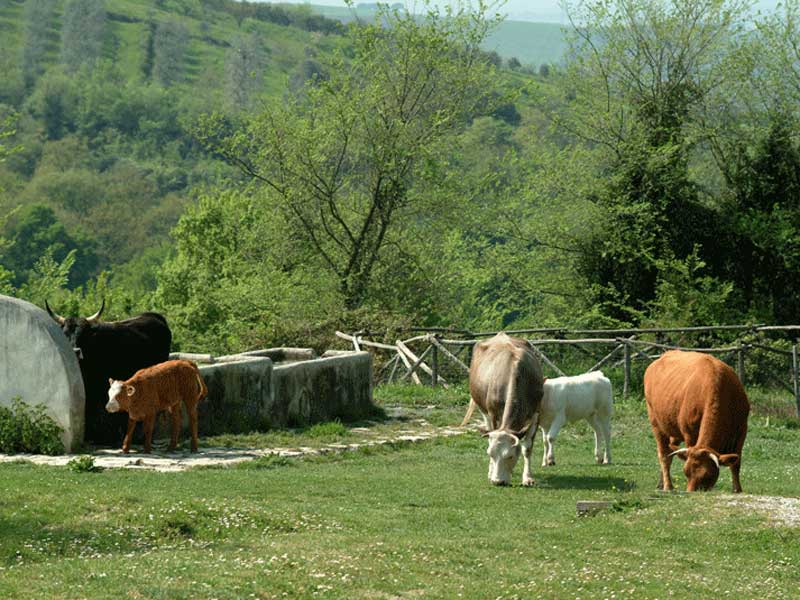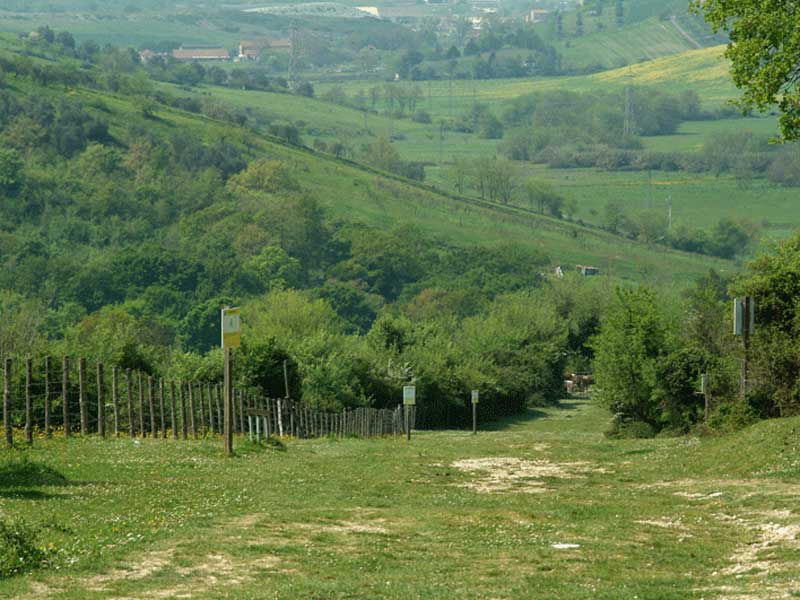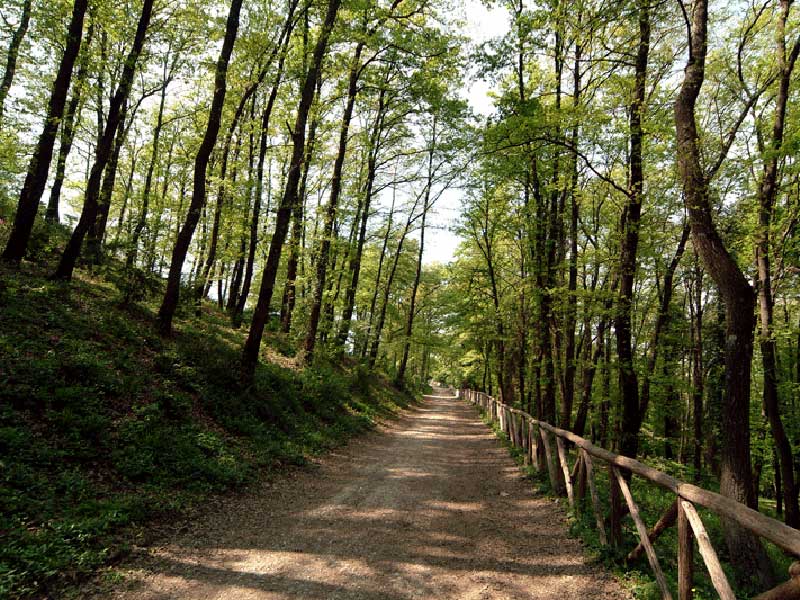Protected Area
Identity Card
- Land Surface Area: 824.00 ha
- Regions: Lazio
- Provinces: Roma
- Municipalities: Fonte Nuova, Mentana
- Establishment Measures: LR 29 06/10/1997
- PA Official List: EUAP1039
- Park Authority: Città Metropolitana di Roma Capitale
Nomentum Nature Reserve
The Reserve, near the Municipality of Mentana, develops for about 850 hectares in a hilly environment with altitudes which do not go beyond the 200 meters and it is formed by the green areas of Macchia Trentani, Valle Cavallara, Macchia Mancini, the archaeological area of Monte d'Oro, a part of Casali di Mentana, the historical town center of Mentana, and by the agricultural area of Mt. Pizzuto. It includes areas used with various aims: woods where deciduous broadleaved trees - like Macchia Mancini, Valle Cavallara, Parco Trentani - alternate with olive groves, sowable lands, cultivated lands, and urban areas. The area is situated where the passage between the ancient fluvial landscape of the Tiber Valley and the western limit of the Cornicolani Mountains area takes place; the latter is characterized by the strong link existing between the naturalistic and the archaeological values in such a deeply degraded territorial context. The main naturalistic element to safeguard in the Reserve is the group of forest and herbaceous vegetal communities linked to the hydrographic network and to the alluvial substratum, referable to the natural environments developing along the course of the River Tiber, its meanders, and its affluents. The agricultural practices and the water regimentation have, in general, considerably reduced throughout Italy the vegetation linked to the sediments deposited by the watercourses and with a high availability of water; therefore, the evidences of an ancient and more widespread hygrophilous vegetation are interesting as far as their safeguard is concerned, wherever they can be found. The area is also important since it represents an area of bioclimatic, geomorphological, and environmental transition between the last stretch of the Apennines and the most external stretch of Roman plain, the limit between the two different environments of the Mediterranean and temperate regions, with considerable overall variations: therefore, you can find here an ecological system of great value with different wildlife and floristic species and with a varied phytoclimatic system.
Geology
The territory presents a hilly morphology with low altitudes between 60 and 200m above sea-level.
The
area is mainly characterized by sedimentary soils belonging to the
Plio-Pleistocene marine cycle, whose main lithotype is represented by
sands and clays lying on the Pliocene formation of the blue clays,
which can be exclusively found in the southern part of the protected
area.
Moreover, there are limited residual outcrops of volcanic
nature consisting of multicolored and stratified tufa of La Storta and
Vulcano Laziale. Within the valleys of the ditches Trentani, Ormetta
and Mancini, there are slimy-clayey alluvial deposits.
Flora and Vegetation
The territory of the Reserve includes areas used with various aims:
fragments of wood where deciduous broadleaved trees alternate with
olive groves, sowable lands, cultivated lands, and urban areas.
The woods, subject to an intense grazing activity, go from the high-trunk Turkey oak wood (Quercus cerris wood)
in Parco Trentani to the most open brush with developing undergrowth:
in the latter the dominating tree is the Turkey oak, together with the
Hungarian oak (Quercus frainetto), the Downy oak (Quercus pubescens), the Flowering ash (Fraxinus ornus), the Oriental hornbeam (Carpinus orientalis), the Field maple (Acer campestre), the Cornelian cherry dogwood (Cornus mas), the Spindle tree (Euonymus europaeus), and, among the herbaceous plants, the wood spurge (Euphorbia amygdaloides). In the undergrowth the spring blossoming are evident and dominated by the Apennine Windflower (Anemone apennina) and by the Spring sowbread (Cyclamen repandum), while in autumn you can admire the Cyclamen hederifolium.
Fauna
As far as wildlife is concerned, mammals like the hedgehog, the
porcupine, and the fox can be found. There are also several mustelids
like the stone marten, the weasel, and the badger. Along the
watercourses the rare spectacled salamander has been sighted. However,
there are also other more common amphibians, like the common toad, the
European green toad, the green frog. The avifauna consists of several
species: piciformes, passerines, the Hoopoe, the Cuckoo. Among the
birds of preys nesting in the area, you can listen to the Owl, the
Tawny Owl, the Scops Owl, the Kestrel, and the Buzzard.
The
territory of the Reserve includes areas dedicated to different uses:
fragments of coppice broadleaf tree woods alternate with olive groves,
cultivated fields, and urban areas.
Archaeology and History
Traces of human settlements date back to the Ancient Bronze Age (2300 BC).
You can still see the walls made with tufa squared blocks dating back
to the 4th century BC, surrounding the stronghold of the ancient
Latin-Sabine center of Nomentum in location Montedoro, besides some
stretches of the Roman road bed of via Nomentana, which crossed the
settlement through a paved forum.
Throughout
the territory, the rests of country villas and above all of the luxury
of the Roman imperial age can be seen: they were often equipped with
spas, painted plaster, marble slabs, mosaic tesserae, tubes for heating
and water pipes. A small part of the materials coming from the
excavations carried out in the area is nowadays preserved in Museo Nazionale Romano.









